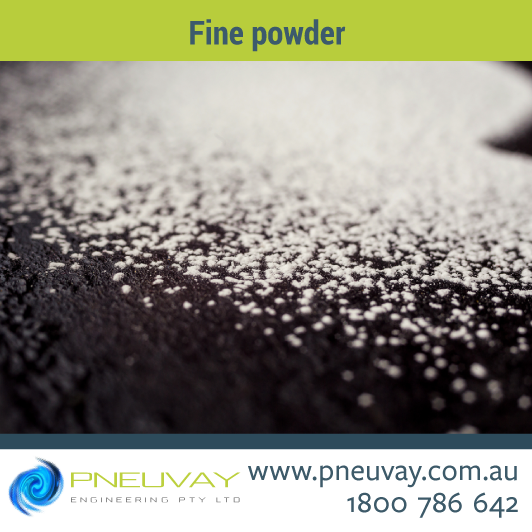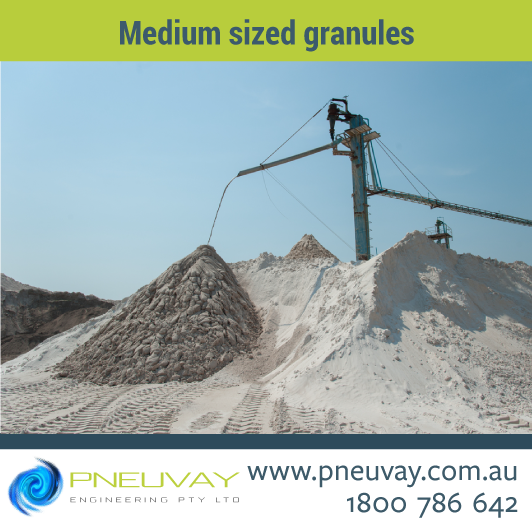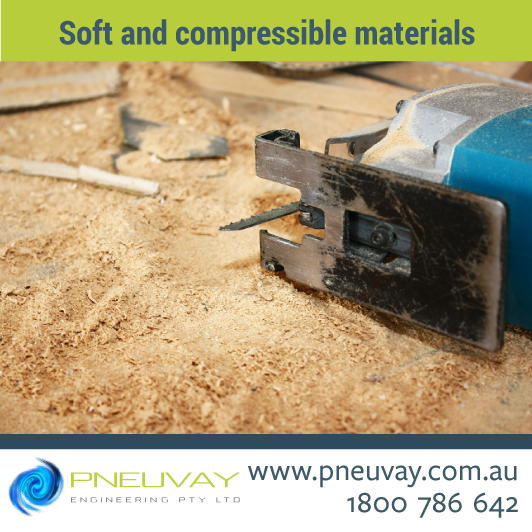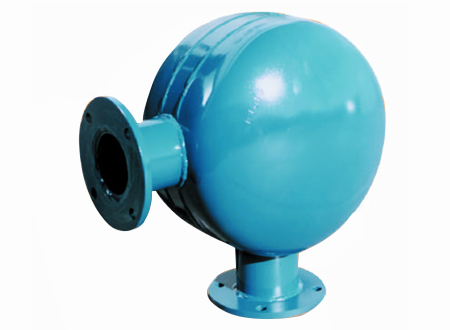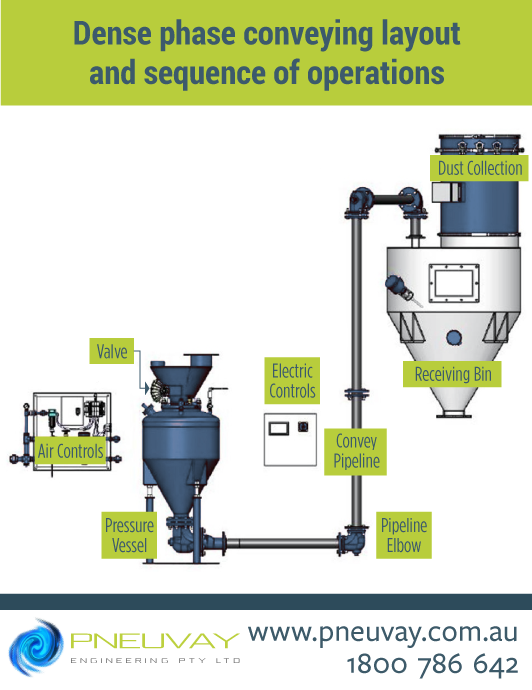Tuesday, March 21, 2017
Air flow rate, solids flow rate and pressure drop are just some of the factor affecting both the dilute and dense phase conveying systems. Due to these and other similarities, many are quite confused on how to distinguish which system best applies for their factory and manufacturing plant needs.
Today we help you decide between the two by firstly exploring the world of dense phase pneumatic conveying system.
Debunking the myths of dense phase conveying systems
Some people think that it is quite easy to know if a factory is using a dense phase system based on the following factors. But a little investigation reveals otherwise.
High pressure systems "must be" dense phase conveying
High pressure is required in factories that convey materials via long distances and this is not due to the high solid concentration maintenance in the pipeline, often associated with dense phase systems. Thus it has little direct influence on the role of the flow.
In one of the articles published in powder bulk by Steve Grant he mentioned:
"A pressure system’s basic components are a high-pressure positive-displacement blower or fan (for dense phase) or a low-pressure air compressor system (for dilute phase) to serve as the air mover, rotary airlock feeder, pressure vessel, conveying line, and receiver. A system using a lower-pressure blower or fan supplies an initial pressure below 15 psig and a terminal pressure near atmospheric pressure. A system using a high-pressure air compressor operates with pressures above 15 psig, usually with an initial pressure of about 45 psig and a terminal pressure near atmospheric pressure."
Thus there are instances where high-pressure air is used in dilute phase systems and not exclusive to dense phase systems alone.
But why link dense phase systems to high pressure systems?
Dense phase conveying uses high pressures and low velocities often required in long conveying lines because of its effectiveness and less wear and tear on both the system and the materials being conveyed. Thus, more long distance conveying plants utilises it compared to dilute systems.
Use of a blow tank (pressure vessel) means the system is operating in dense phase conveying
The idea which associates blow tanks or pressure vessels such as pressure pots with dense phase systems is inherited from the above mentioned myth of dense phase system.
Nevertheless, dilute phase systems also makes use of pressure vessels on feeding devices, especially for long distances, especially for highly abrasive materials. This is often found in vacuum conveying systems for direct feeding of blenders, reactors and other enclosed process vessels.
Dense phase systems never block
It rarely happens, but on some rare occasions even dense phase systems gets blocked. This happens when fine fluidised powders becomes de-aerated
and when coarse granular solids with high degree of permeability stops moving below a certain gas velocity. Nevertheless, once the gas velocity is increased, then it starts moving again.
Ideal particles for dense phase pneumatic conveying systems
Some materials can be ideally conveyed via dilute phase systems, but some are best moved using dense phase pneumatic conveying systems such as the following:
Fine powders and dense phase pneumatic systems
Fine powders such as cement and silica flour generally flow easily via a dense phase pneumatic conveying system. Nevertheless for efficient conveying, an aeration jet in the transporter cone is required. This helps swirl and fluidise the powder into the transporter vessel and eliminates bridging across the cone section. Thus providing a consistent powder flow into the line.
Dense phase conveying of fine powder
Fine Granules and dense phase pneumatic systems
Calcium carbonate and certain types of soda ash although difficult, can be efficiently conveyed via dense phase systems via short conveying lines and air injectors along the lines to reduce resistance.
Dense phase conveying of fine granules
Talk with pneumatic conveying experts to ensure you are using the right system for your factory needs.
Medium-sized granules and dense phase
pneumatic systems
Medium sized granules such as silica sand, dolomite, granulated sugar and other medium sized granules does not require fluidising when conveying via a dense phase system. However, it does require high pressure application.
Dense phase conveying of medium sized granules
It is also highly recommended that these materials be conveyed in short distances because the sluggish movement of these granules can become violent as the conveying system gets longer.
Soft and compressible materials and dense phase pneumatic systems
You have the option to convey soft and compressible materials such as wood flour and sawdust via dense phase systems even if they can pack and plug the conveying lines. Just use a lower conveying pressure and higher air volume to prevent these materials from packing.
Dense phase conveying of soft and compressible materials
Abrasive materials and dense phase pneumatic conveying systems
One of the problems in conveying abrasive materials is how easily it can wear components such as butterfly valves, line switches and bends. Thus, when using dense phase systems for abrasive materials such as calcined aluminium, silica sand, carbon fines and flints it is advised that bends be limitedly used. It is also best to use the standard bend near the transporter discharge.
Pneuvay Engineering supplies resistant
rhino bends for these types of applications. Contact us to get your free quote, today.
Dense phase conveying accessory: rhino bends
Basics of dense phase conveying layout and sequence of operations
Now that we have a clearer picture of the materials that can be conveyed via dense phase systems, let us move further and know about its layout and sequence of operations.
Step 1: The pressure vessel is filled with materials.
Step 2: The valve and seals close the pressure vessel the moment it is full. However, note that the pressure vessel inlet is sealed but the convey pipeline discharge in some instances is not. For example, Tandem and multiple pots on a single line system, have to close the discharge.
Step 3: Compressed air is introduced into the system where it seeks the path of least resistance, which is out of the end of the convey pipeline discharge
Step 4: This pressure forces the material out of the pressure vessel and into the conveyed pipeline.
Step 5: As the material goes out of the pressure vessel through the pipeline, the materials velocity will also gradually increase thus making air slip past some of the materials.
Step 6: While the material exits the convey pipeline to reach its final destination, the resistance from the materials fluid plug is eliminated and the pressure from the system also decreases. This signals that the material has reached its destination and the whole cycle repeats again.
The image below shows a basic dense phase system and one method of configuration. The configuration can vary according to material being conveyed, distance conveying rates and several other major factors.
Dense phase conveying process
Given these facts and myths about dense phase conveying, it is still wise to consult with expert pneumatic conveying engineers for your system needs.
Here at Pneuvay Engineering, we offer
engineering consulting to various businesses. Contact us online to set an appointment with us.
All News |
Back to Top

